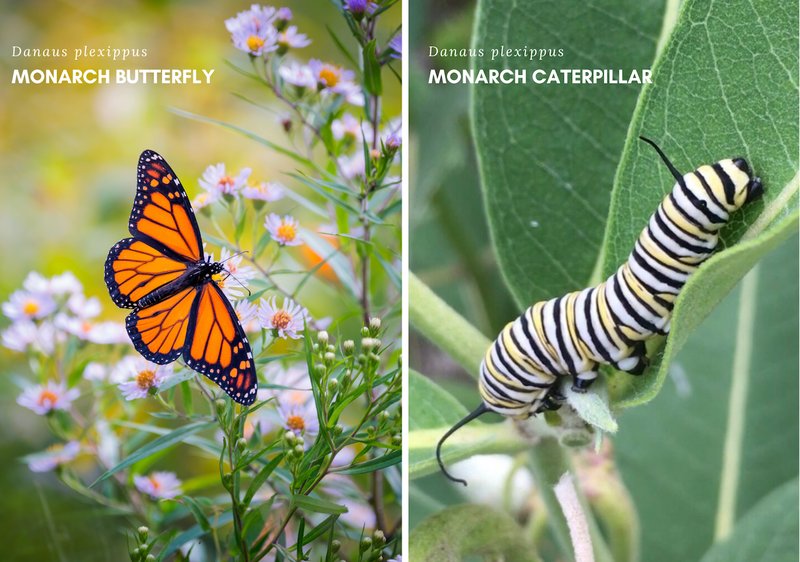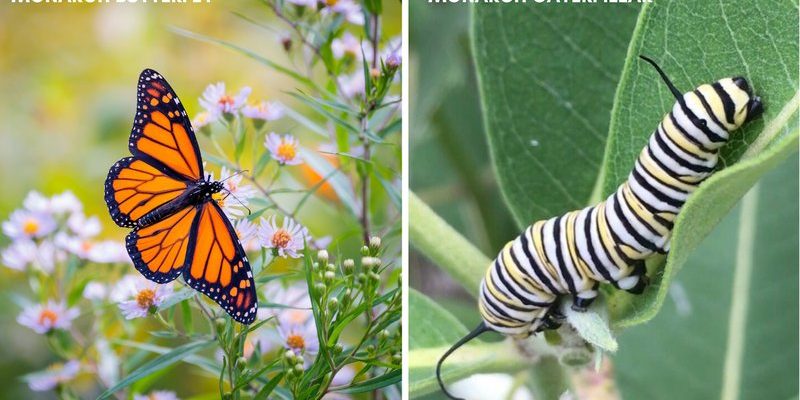
Butterflies aren’t just pretty faces, though. They’re also expert survivors, capable of thriving in a variety of environments. From rainforests bursting with life to arid deserts, butterflies have figured out how to make the most of their surroundings. So, grab a cup of coffee, get comfy, and let’s explore where these enchanting insects reside and how they adapt to their ever-changing homes.
Butterfly Habitats Around the World
Butterflies can be found in nearly every corner of the globe. They thrive in diverse environments, from lush gardens to wild, untamed forests. Their habitats largely depend on the species, climate, and availability of food sources. Here’s a look at some common butterfly habitats:
- Forests: Many butterfly species prefer wooded areas, where they can find shelter and an abundance of nectar-rich flowers.
- Grasslands: Open fields provide plenty of sunlight and diverse plant life, making them a perfect home for various butterflies.
- Gardens: Our backyards often play host to butterflies, thanks to cultivated plants and flowers that attract these pollinators.
- Wetlands: Butterflies enjoy the moist environment of swamps and marshes, which is abundant in vibrant plant life.
Each habitat plays a unique role in supporting butterfly populations. For example, wooded areas offer protection from predators, while gardens filled with blooming flowers provide the necessary sustenance. Honestly, the more diverse the habitat, the more likely you are to spot a range of butterfly species.
The Life Cycle of a Butterfly
To truly understand where butterflies live, it’s essential to grasp their life cycle. Butterflies go through four fascinating stages: egg, larva (caterpillar), pupa (chrysalis), and adult. Each stage has its own unique needs and habitat preferences.
During the egg stage, female butterflies lay their eggs on specific plants, known as host plants. This is a crucial choice because once the eggs hatch, the caterpillars will need these plants as their primary food source. It’s like choosing a restaurant; you want to ensure you’ve picked the right one!
After a few days, the eggs hatch into hungry caterpillars. This larval stage is a time of significant growth, and caterpillars often munch their way through leaves, sometimes stripping a plant bare. They do this to store energy for the next stage of their transformation.
Next comes the pupal stage, where the caterpillar forms a chrysalis. During this time, it undergoes a magical transformation, turning into a butterfly. While in the chrysalis, the butterfly is incredibly vulnerable, but it’s also a time of great change.
Finally, the adult butterfly emerges, ready to explore its habitat. With its newly formed wings, the butterfly sets out to find food and, ultimately, a mate. This life cycle demonstrates how butterflies depend on specific environments at different stages of life.
Adapting to Different Environments
So, how do butterflies manage to thrive in such a variety of habitats? Adaptation is the key. Butterflies have developed several strategies that allow them to survive and even thrive in different environments.
Firstly, the coloration of a butterfly plays a vital role in its adaptability. Many butterflies have wings that blend into their surroundings, helping them avoid predators. Imagine walking through the forest and spotting a brightly colored butterfly resting on a flower. Its hues might help it stand out, but when it perches on a leaf, it becomes nearly invisible. This clever use of color can be a matter of life and death.
Secondly, butterflies have learned to utilize the resources around them. For instance, some species have adapted to feed on particular types of flowers, while others can survive in harsher conditions. Those that dwell in deserts have adjusted their life cycles, often becoming active only during cooler times of the day to avoid heat.
Lastly, migratory behavior is another form of adaptation. The Monarch butterfly is famous for its long migrations, traveling thousands of miles to find better living conditions. By moving to warmer climates in the winter, they can escape the harsh cold, ensuring their survival.
The Importance of Diet in Butterfly Habitats
Butterflies are not picky eaters, but their diets can vary widely depending on their habitat. They primarily feed on nectar from flowers, but they also require other nutrients. For instance, some species rely on tree sap, rotten fruit, and even animal dung for essential minerals.
Butterflies have a specialized mouthpart called a proboscis that allows them to sip nectar. Think of it like a straw—perfect for extracting delicious liquids from flowers. Different species of butterflies may prefer different types of nectar. Therefore, the availability of certain flowers can directly impact butterfly populations in a given area.
Additionally, adult butterflies often seek out minerals, especially in moist, sandy areas like riverbanks. This behavior is called puddling, where they gather in groups to drink from mud puddles. Puddling not only provides hydration but also essential nutrients like salts and amino acids.
Challenges Butterflies Face in Their Habitats
Despite their beauty and adaptability, butterflies face numerous challenges that can threaten their survival. Habitat loss is a primary concern, as urban development and agriculture continue to encroach on their natural environments. The loss of native plants directly impacts butterflies, limiting their access to food and breeding grounds.
Climate change is another significant threat. Fluctuating temperatures can disrupt their migration patterns and alter the availability of food sources. For example, if flowers bloom earlier in the spring due to warmer temperatures, butterflies may arrive to find that their food source has already faded.
Pesticides also pose a severe risk. Many chemicals used in agriculture can be harmful or fatal to butterflies, affecting their populations and overall health. Without a healthy ecosystem, butterflies struggle to thrive.
How You Can Help Butterflies Thrive
You might be wondering what you can do to help butterflies in your area. Fortunately, there are several simple steps you can take to create a more butterfly-friendly environment.
- Plant native flowers: Native plants are crucial for butterflies, providing food and habitat.
- Avoid pesticides: Limit or eliminate chemical use in your garden to protect butterflies and other beneficial insects.
- Create a butterfly garden: Design a space with diverse flowers, host plants, and sunbathing spots for butterflies.
- Provide water sources: A simple shallow dish of water can be beneficial for thirsty butterflies.
By making your garden a welcoming place, you can contribute to the survival of these remarkable creatures. It’s a rewarding way to connect with nature and support local ecosystems.
Butterflies are incredible insects that inhabit diverse environments and display extraordinary adaptability. From their expressive colors to their fascinating life cycles, they remind us of the beauty of nature and the importance of preserving our ecosystems. As you venture into your garden or local park, take a moment to appreciate the butterflies fluttering around. With a little effort, we can all contribute to their survival and ensure future generations can enjoy the wonder of these delicate creatures. So, let’s work together to protect their habitats—every small step counts!

